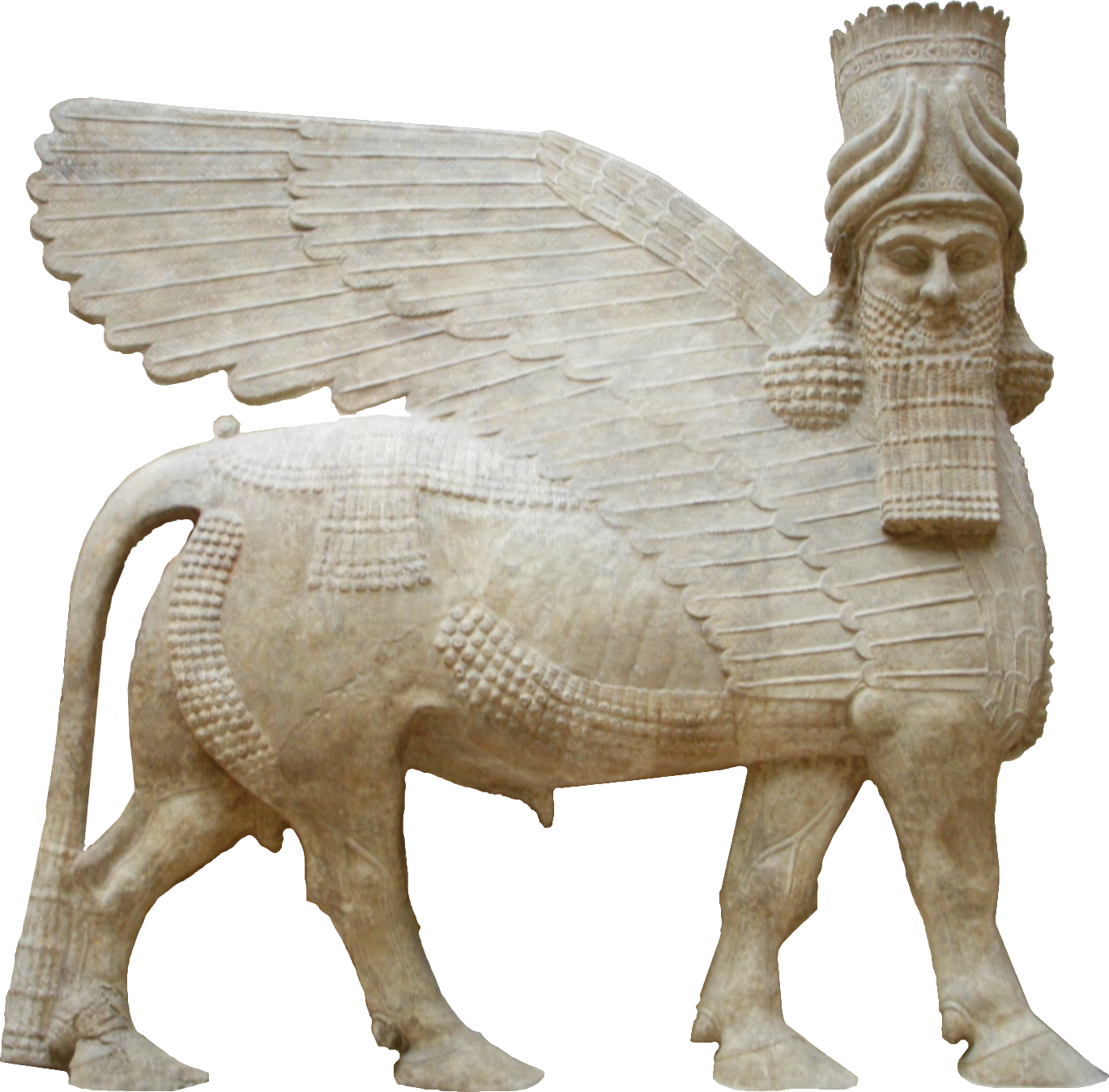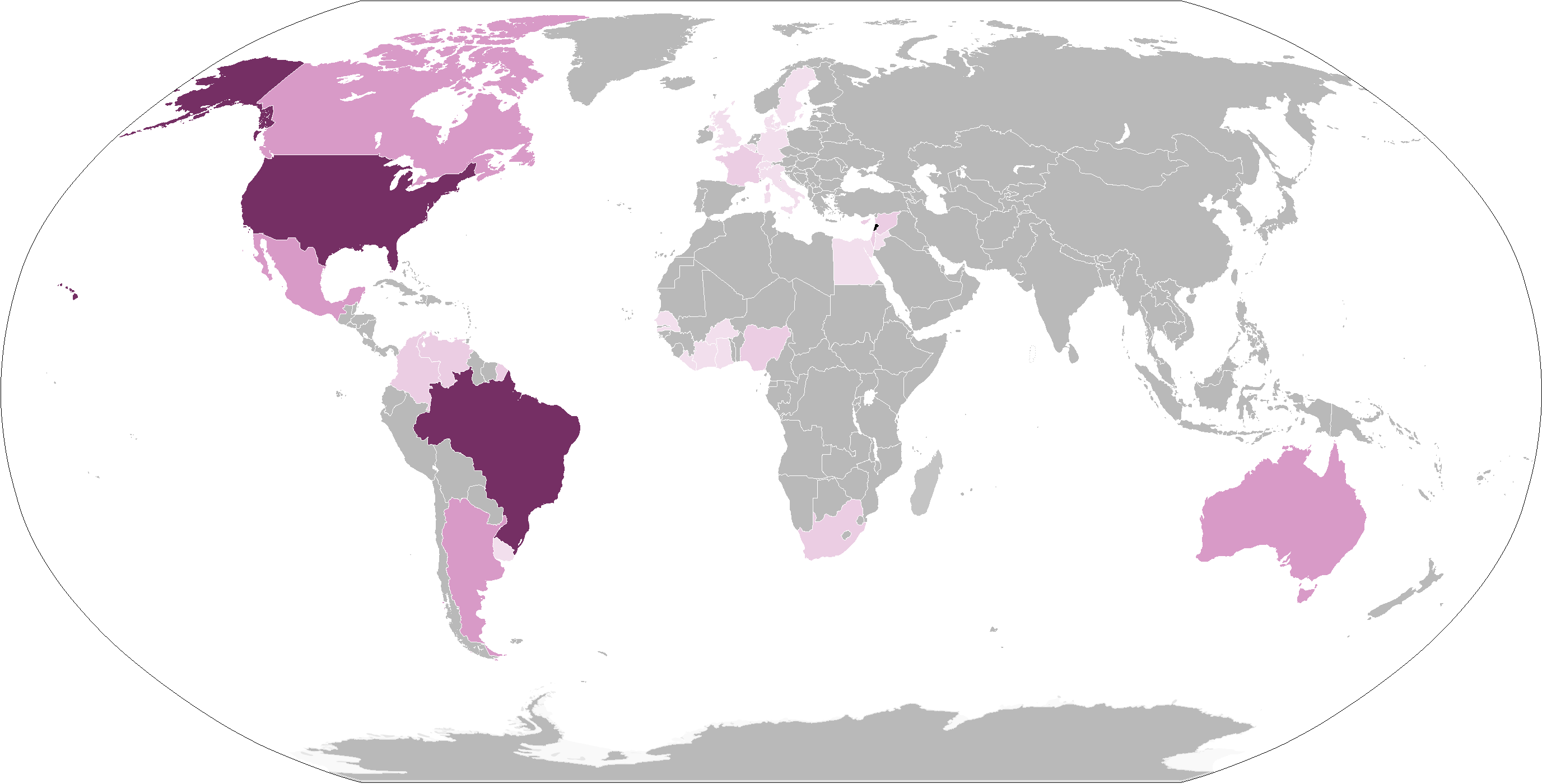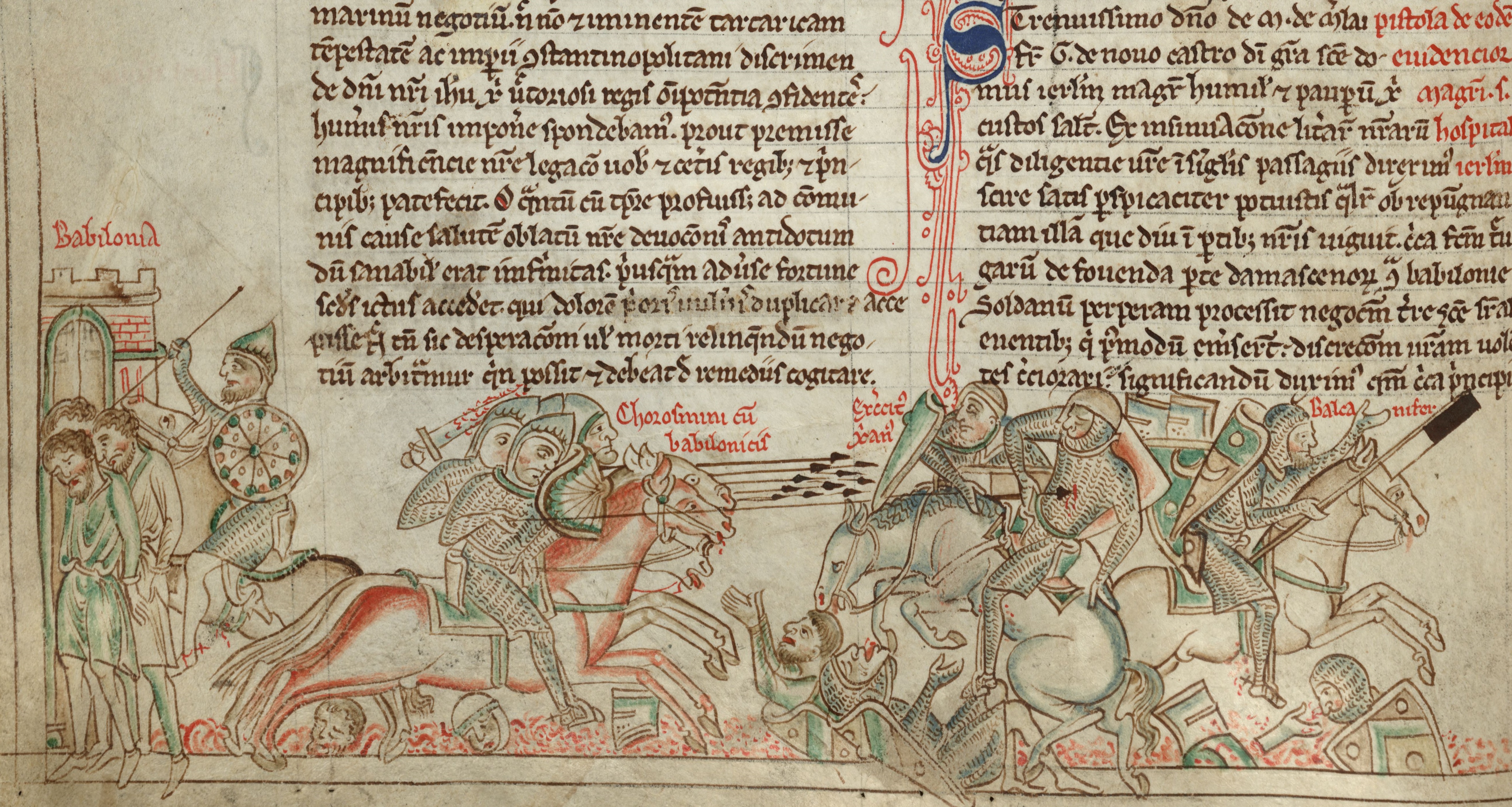|
Sahel Aalma (fossil Site)
Sahel Alma or Sahel Aalma is a Late Cretaceous Paleontology, paleontological site and Lagerstätte, Konservat-Lagerstätte in Keserwan-Jbeil Governorate, Keserwan-Jbeil, Lebanon. Located near the Sahel Alma, town of the same name, it documents well-preserved deepwater marine fossils dating to the late Santonian stage of the Cretaceous. It is often associated with the slightly older, similarly famous Sannine Formation sites (Haqel, Hadjula, and Nammoura), with these four sites being together referred to as the "Fish Beds" of Lebanon. It is one of the few fossiliferous units of the Chekka Formation, a wider geological formation in Lebanon deposited from the Late Cretaceous to the early Paleogene. Description Much like the fossil sites of the older Sannine Formation, Sahel Alma contains exquisitely preserved marine fossils from the Tethys Ocean, deposited off the northern coast of the Afro-Arabian continent. However, unlike the Sannine Formation sites, which were deposited in relativ ... [...More Info...] [...Related Items...] OR: [Wikipedia] [Google] [Baidu] |
Lagerstätte
A Fossil-Lagerstätte (, from ''Lager'' 'storage, lair' '' Stätte'' 'place'; plural ''Lagerstätten'') is a sedimentary deposit that preserves an exceptionally high amount of palaeontological information. ''Konzentrat-Lagerstätten'' preserve a high concentration of fossils, while ''Konservat-Lagerstätten'' offer exceptional fossil preservation, sometimes including preserved soft tissues. ''Konservat-Lagerstätten'' may have resulted from carcass burial in an anoxic environment with minimal bacteria, thus delaying the decomposition of both gross and fine biological features until long after a durable impression was created in the surrounding matrix. ''Fossil-Lagerstätten'' spans geological time from the Neoproterozoic era to the present. Worldwide, some of the best examples of near-perfect fossilization are the Cambrian Maotianshan shales and Burgess Shale, the Ordovician Soom Shale, the Silurian Waukesha Biota, the Devonian Hunsrück Slates and Gogo Formation, the Ca ... [...More Info...] [...Related Items...] OR: [Wikipedia] [Google] [Baidu] |
Mesophotic Coral Reef
A mesophotic coral reef or mesophotic coral ecosystem (MCE), originally from the Latin word ''meso'' (meaning middle) and ''photic'' (meaning light), is characterized by the presence of both light-dependent coral and algae, and organisms that can be found in water with low light penetration. Mesophotic coral ecosystems occur at depths beyond those typically associated with coral reefs as the mesophotic ranges from brightly lit to some areas where light does not reach. Mesophotic coral ecosystem (MCEs) is a new, widely adopted term used to refer to mesophotic coral reefs, as opposed to other similar terms like "deep coral reef communities" and "twilight zone", since those terms sometimes are confused due to their unclear, interchangeable nature. Many species of fish and corals are endemic to the MCEs making these ecosystems a crucial component in maintaining global diversity. Recently, there has been increased focus on the MCEs as these reefs are a crucial part of the coral reef syst ... [...More Info...] [...Related Items...] OR: [Wikipedia] [Google] [Baidu] |
Anomotodon
''Anomotodon'' is an extinct genus of shark related to the extant goblin shark (''Mitsukurina owstoni''). The distribution of ''Anomotodon'' fossils is worldwide, in formations indicating that members of the genus lived from the Early Cretaceous epoch through the Eocene epoch, and perhaps through the Oligocene as well. Described species include ''A. novus'', ''A. plicatus'', ''A. principalis'', and ''A. multidenticula''. See also *''Scapanorhynchus ''Scapanorhynchus'' (from , 'shovel' and 'snout') is an extinct genus of shark belonging to the family Mitsukurinidae, that lived during the Cretaceous period, from the Aptian to the end of the Maastrichtian. It is a close relative of the li ...'' References Further reading * * * Mitsukurinidae Cretaceous sharks Paleocene sharks Eocene sharks Prehistoric fish of Asia Prehistoric shark genera Taxa named by Camille Arambourg Fossil taxa described in 1952 {{Cretaceous-fish-stub ... [...More Info...] [...Related Items...] OR: [Wikipedia] [Google] [Baidu] |
Hemiscylliidae
The Hemiscylliidae are a family of sharks in the order Orectolobiformes, commonly known as longtail carpet sharks and sometimes as bamboo sharks. They are found in shallow waters of the tropical Indo-Pacific. They are relatively small sharks, with the largest species reaching no more than in adult body length. They have elongated, cylindrical bodies, with short barbels and large spiracles. As their common name suggests, they have unusually long tails, which exceed the length of the rest of their bodies. They are sluggish fish, feeding on bottom-dwelling invertebrates and smaller fish. Genera and species ''Chiloscyllium'' This genus is distinguished by a relatively long snout with subterminal nostrils. The eyes and supraorbital ridges are hardly elevated. The mouth is closer to the eyes than to the tip of the snout, with lower labial folds usually connected across the chin by a flap of skin. The pectoral and pelvic fins are thin and not very muscular. No black hood on the h ... [...More Info...] [...Related Items...] OR: [Wikipedia] [Google] [Baidu] |
Paul-Émile Botta
Paul-Émile Botta (6 December 1802 – 29 March 1870) was an Italian-born French scientist who served as Consul in Mosul (then in the Ottoman Empire, now in Iraq) from 1842, and who discovered the ruins of the ancient Assyrian capital of Dur-Sharrukin. Life He was born Paolo Emiliano Botta in Turin, Italy, on December 6, 1802. His father was Italian historian Carlo Giuseppe Guglielmo Botta (1766–1837). In 1822 they moved to Paris where he studied under Henri Marie Ducrotay de Blainville. Botta was selected to be naturalist on a voyage around the world. Although he had no formal medical training, he also served as the ship surgeon. The ''Heros'' under Captain Auguste Bernard Duhaut-Cilly (1790–1849) left Le Havre April 8, 1826, and sailed south through the Atlantic Ocean, stopping in Rio de Janeiro and around Cape Horn. They traveled up the coast stopping at Callao, Mexico, and Alta California. Jean Baptiste Rives (1793–1833), the former secretary of the Kingdom of Hawai ... [...More Info...] [...Related Items...] OR: [Wikipedia] [Google] [Baidu] |
Lady Hester Stanhope
Lady Hester Lucy Stanhope (12 March 1776 – 23 June 1839) was a British adventurer, writer, antiquarian, and one of the most famous travellers of her age. Her excavation of Ascalon in 1815 is considered the first to use modern Archaeology, archaeological principles, and her use of a medieval Italian document is described as "one of the earliest uses of textual sources by field archaeologists". Her letters and memoirs made her famous as an explorer. Early life Stanhope was the eldest child of Charles Stanhope, 3rd Earl Stanhope by his first wife, Hester Stanhope, Viscountess Mahon, Lady Hester Pitt. She was born at her father's seat of Chevening and lived there until early in 1800, when she was sent to live with her grandmother, Hester Pitt, Countess of Chatham, at Burton Pynsent. In August 1803, she moved into the home of her uncle, William Pitt the Younger, to manage his household and act as his hostess. In his position as British prime minister, Pitt, who was unmarried, ... [...More Info...] [...Related Items...] OR: [Wikipedia] [Google] [Baidu] |
Maronites
Maronites (; ) are a Syriac Christian ethnoreligious group native to the Eastern Mediterranean and the Levant (particularly Lebanon) whose members belong to the Maronite Church. The largest concentration has traditionally resided near Mount Lebanon in modern Lebanon. The Maronite Church is an Eastern Catholic particular church in full communion with the pope and the rest of the Catholic Church. The Maronites derive their name from Saint Maron, (350-410 AD. ), a monk who migrated with his followers from Antioch to the Lebanese Mountains and founded the Maronite church. The spread of Christianity was very slow in the Lebanese region, in the 5th century AD in the highlands they were still pagan. St. Maron sent the apostle Abraham of Cyrrhus known as the "Apostle of Lebanon" with a mandate to convert the pagan inhabitants of Lebanon to Christianity. After their conversion, the inhabitants of the region renamed the Adonis River to the Abrahamic River in honor of the Saint who ... [...More Info...] [...Related Items...] OR: [Wikipedia] [Google] [Baidu] |
Seventh Crusade
The Seventh Crusade (1248–1254) was the first of the two Crusades led by Louis IX of France. Also known as the Crusade of Louis IX to the Holy Land, it aimed to reclaim the Holy Land by attacking Egypt, the main seat of Muslim power in the Near East. The Crusade was conducted in response to setbacks in the Kingdom of Jerusalem, beginning with the loss of the Holy City in 1244, and was preached by Pope Innocent IV, Innocent IV in conjunction with a crusade against Frederick II, crusade against emperor Frederick II, Baltic rebellions and Mongol incursions. After initial success, the crusade ended in defeat, with most of the army – including the king – captured by the Muslims. Following his release, Louis stayed in the Holy Land for four years, doing what he could towards the re-establishment of the kingdom. The struggle between the papacy and Holy Roman Empire paralyzed Europe, with few answering Louis' calls for help following his capture and ransoming. The one answer was th ... [...More Info...] [...Related Items...] OR: [Wikipedia] [Google] [Baidu] |
Maronite Monastery In Sahel Alma
Maronites (; ) are a Syriac Christian ethnoreligious group native to the Eastern Mediterranean and the Levant (particularly Lebanon) whose members belong to the Maronite Church. The largest concentration has traditionally resided near Mount Lebanon in modern Lebanon. The Maronite Church is an Eastern Catholic particular church in full communion with the pope and the rest of the Catholic Church. The Maronites derive their name from Saint Maron, (350-410 AD. ), a monk who migrated with his followers from Antioch to the Lebanese Mountains and founded the Maronite church. The spread of Christianity was very slow in the Lebanese region, in the 5th century AD in the highlands they were still pagan. St. Maron sent the apostle Abraham of Cyrrhus known as the "Apostle of Lebanon" with a mandate to convert the pagan inhabitants of Lebanon to Christianity. After their conversion, the inhabitants of the region renamed the Adonis River to the Abrahamic River in honor of the Saint who preach ... [...More Info...] [...Related Items...] OR: [Wikipedia] [Google] [Baidu] |







